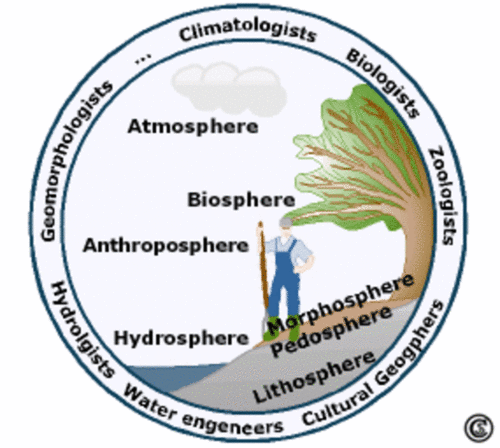Realisation of Integrated Natural Resource Management
An integrated resource management and planning refers to modern ecosystem management, emphasizing the management of systems rather than of individual components of the system (Förch and Schütt 2004 b; Heathcote 1998).
It emerged from the increasing realisation that an isolated resource management, which used to be prevalent, has not been successful. This can be attributed to the non-consideration of
- the interactions of the individual resources;
- the linkages between these resources and other physical and human components of the ecosystem (see interactions of geospheres) and thus of
- the impacts of management actions imposed on one resource on the other components and processes within the ecosystem (Ewert et al. 2004; Heathcote 1998).
In integrated resource management, by contrast, the ecosystem is managed as one entity. All components of and processes within the ecosystem are considered, as well as the interactions between them. This includes humans and their activities as well as the effects of their resource use on the system.
The following elements have thus to be integrated
- the different components of the ecosystem including the population with their different interests, values and perspectives as well as their activities;
- the different disciplines dealing with the individual spheres;
- the various governmental departments, institutions and organisations that are responsible for the individual domains;
- the various tasks and activities (Ratter 2002; Heathcote 1998).
Alongside this meaning, the term integrated is also often used to refer to the integration of goals (German et al. 2006). Several goals are to be strived for simultaneously, e.g. a sustainable natural resource management and a sustainable rural development.
This seems to be a challenging task. The challenges of planners and managers are specified on the following web page.

